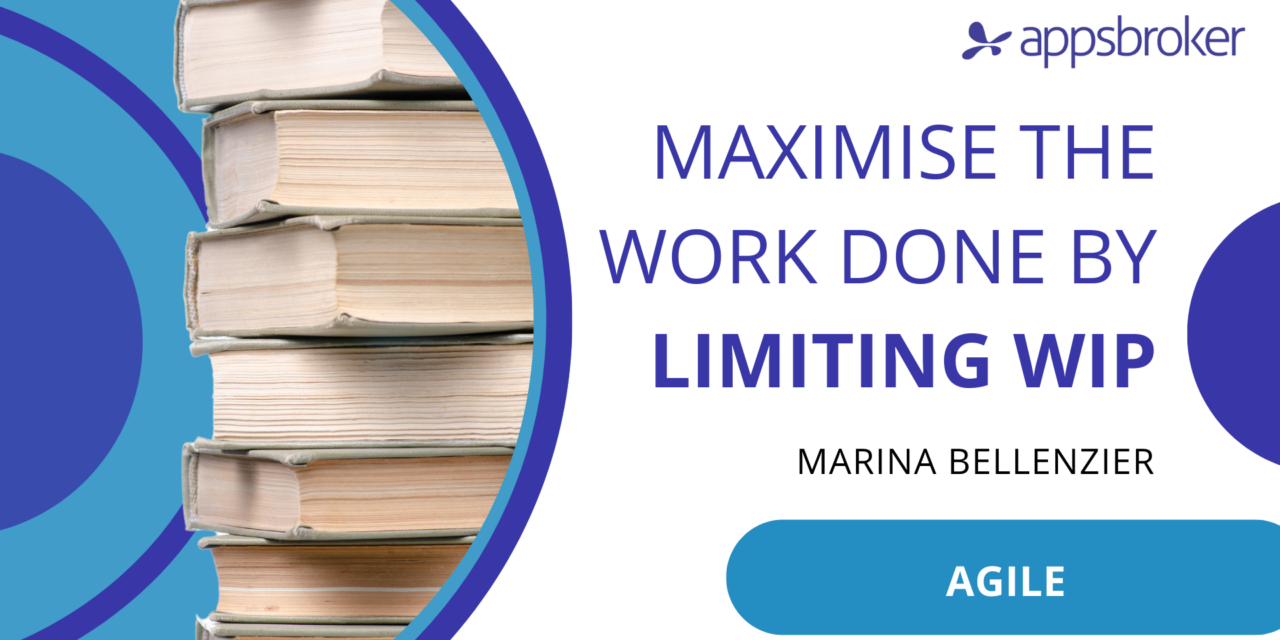Ever had so much going on at once that you feel completely overwhelmed? When you’re this overloaded, it becomes difficult for your brain to fully process ideas and maintain productivity.
For most of us, the need for variety and the urge to make progress on all fronts makes us start way too many things at the same time. This persistent feeling at the back of your mind often leads to a high level of discomfort. This discomfort is called The Zeigarnick effect.
Every ongoing task in our mind takes energy to maintain and update. By limiting the amount of projects you’re working on, you can reduce the amount of multitasking and context switching required – this in turn can improve focus and productivity.
What is the WIP Limit?
Work In Progress (WIP) is the enemy of Agility. Agile means to deliver early, get feedback first, fail quickly and learn early—timing matters. Your WIP is the number of tasks that are currently in progress or have been started but not yet completed. For example, if a team is working on 5 projects simultaneously, then their WIP would be 5.

Limiting WIP can be compared to a juggler who is trying to keep multiple balls in the air. Just like how a juggler can only handle a certain number of balls at once, a person or team can only handle a certain number of ongoing tasks without becoming overwhelmed. If the juggler tries to handle too many balls, they may drop them and lose control. Similarly, if a person or team takes on too many ongoing tasks, they may struggle to maintain focus and productivity, and may not be able to complete any of the tasks to the best of their ability. By limiting the number of tasks, an individual, or your team, can maintain better control and focus on the task at hand.
What are the benefits of having a WIP Limit?
WIP limit would be the largest amount of work in progress’ allowed at any given time within a team or system. Although this sounds simple, many teams fail to emphasise why WIP limits are essential, which leads them to be ignored or misused. As much as everyone wants to believe they can multitask well, the truth is these individuals will always be less effective than those focusing on one task at a time.
Establishing a WIP Limit in your workflow can have many benefits, such as:
- Improved focus: Individuals and teams can complete each task to their utmost potential, without being overwhelmed or distracted by other ongoing projects.
- Increased productivity: Stop Starting, Start Finishing! Limiting WIP can reduce the negative effects of multitasking and context switching, allowing individuals and teams to work more efficiently and produce higher-quality work.
- Clearer priorities: A WIP limit can make it easier to =identify the most important tasks and prioritise them accordingly – leading to a more organised and streamlined approach to work.

- Reduced stress: When individuals and teams are not overwhelmed with too many ongoing tasks, it can lead to a more manageable workload and reduced stress levels.
- Improved communication: WIP limits can be very graceful conversation starters. The aim is not to strictly adhere to WIP limits, but rather to use any breaches as a starting point for conversation. By asking questions and analysing the flow of work, teams can move beyond the physical board and address the root challenges. For instance, if tickets pile up in the QA stage, teams can discuss methods to enhance cross-functional collaboration and expedite ticket completion, instead of disregarding the issue.
How to implement WIP Limit on my workflow?
At the beginning of any project, especially for a team with little Agile experience, it can be tricky to set an appropriate WIP limit. Make the limit too strict, and people will get discouraged, frustrated, or even worried. Here’s what we recommend:
Step 1) Determine the appropriate WIP limit. Initially, the team should pick what limits that they feel comfortable with and can commit to following for some time. Team size, task complexity and the team’s overall workload must be considered. As the team matures, the WIP limits should get smaller.
Step 2) Communicate the WIP limit. Once the WIP limit has been determined, communicate it clearly to the team and keep it constantly visible. Make sure everyone understands the reasoning behind the limit and the benefits it can bring.
Step 3) Implement a visual system. In order to avoid breaking WIP limits, teams might be tempted to compromise on transparency by not making all their WIPs visible on the board. A visual system such as a Kanban board or task board can be used to track progress and ensure that the WIP limit is being adhered to.
Step 4) Monitor progress and continuously improve. Regularly monitor progress to ensure that the WIP limit is being followed and that work is being completed efficiently. Be open to feedback and suggestions from the team. Continuously evaluate the process and look for ways to improve efficiency and effectiveness.
Don’t forget that having too high WIP limits means your team or yourself is working on many tasks, switching contexts all the time, and failing to meet deadlines.
Final Thoughts
In conclusion, Work in Progress (WIP) limits are a powerful tool for improving workflow efficiency and productivity. By setting WIP limits, teams can maintain a steady flow of work, identify bottlenecks, and improve collaboration and communication.
However, implementing WIP limits requires careful planning, communication, and continuous improvement. It’s important to regularly review and adjust the WIP limits as needed, and to promote a culture of continuous improvement within the team.
Ultimately, WIP limits are a key element of an Agile and lean approach to workflow management and can help teams to deliver higher-quality work more efficiently.











